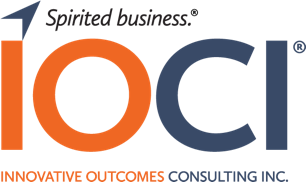
There’s one thing leaders should fear in 2018: burnout.
According to a study this decade at the Karolinska Institute in Sweden, burnout changes neural circuits in the brain and damages your ability to cope with stressful situations going forward.
The good news, according to Kate Lovett, a consultant psychiatrist and dean of the Royal College of Psychiatrists in the UK, is that burnout is not considered a mental illness. Instead, it’s a form of chronic workplace stress. On the other hand, her colleagues say, it does creep up on you one small request and project at a time. That’s why most folks don’t realize they are in its grip until things reach a more critical point.
Burnout is a form of chronic workplace stress.

These are warning signs of burnout:
Exhaustion
We’re talking no energy to do anything, fitful sleep and perhaps even flu-like symptoms.
Difficulty concentrating
You may describe it as zoning out, but you aren’t controlling that state.
Irritation and frustration
Yep, often self-critical, too.
Sense of overwhelm
Ordinary places feel overwhelming. You might notice things like the lights being too bright or you can’t tune out the noise.
Isolation
Detachment from things you used to love.
What’s a leader to do?
Consider burnout your brain’s defense mechanism against stress tackling you with even longer lasting effects. And the worse move you can make in this situation? To come out fighting. “If you say, ‘I’m going to get on top of this, beat the burnout and get back to work; people may have lost confidence in me, so I’ll work even harder to prove them wrong’… that’s not necessarily going to end well,” Brian Rock, a psychoanalyst and clinical psychologist shared with The Guardian.
What’s a leader to do beyond the usual diet and exercise advice? Consider implementing these four strategies now, even if you haven’t reached warning levels yet:
Essentialism.
No, it’s not a new religion. It’s an approach that focuses on doing less better – which is not to be confused with getting more done faster. It’s truly about paring down your tasks so that you can do a handful expertly.
But best of all, essentialism evolves around taking back control of your daily choices so that you choose what you want to do rather than letting others set an agenda for you.
And that’s definitely a mindset, assures Greg McKeown, who literally wrote the book and has talked the talk on this discipline for nearly 20 years. To get started with your exploration, check out his website.
The Pomodoro Technique
Need something to wrap your arms around today? Adopt the Pomodoro Technique, a time-management method first introduced to business professionals in the late 1980s. Chances are, you’ve used some version of it already in your career:
- Decide on the task you’ll tackle.
- Set the pomodoro timer (traditionally to 25 minutes).
- Work on the task.
- End work when the timer rings and put a checkmark on a piece of paper.
- If you have less than four checkmarks, take a short break (3–5 minutes), then repeat step 2.
- After four pomodoros, take a longer break (15-30 minutes), reset your checkmark count to zero, and start again at step 1.
Sure, there are a lot of fancy apps that will help you with timing and tracking, but researchers find this works best when you keep it simple and old school, the better to cement your resolve. For instance, use an actual kitchen timer that requires you to wind it, write down what you need to do on a piece of paper and make the checkmarks at the end.
Most of all, don’t cheat. If you are interrupted, immediately postpone or reschedule the new topic. If you finish early, use the rest of the ticks on your timer to study a new topic, learn more about your specialty – those “someday I’ll get around to it” tasks that pile up naturally. Whatever you do, don’t divide your pomodoro into any other measurements than 25 minutes – in the big picture, you are teaching your brain to deal with focus and flow.
60-Second Centering
Before your next meeting or interaction, take 60 seconds to relax, clear your mind of clutter and set an intention. For example, “My intention at the policy meeting is to listen more intently, understand my colleague’s viewpoint, make requests if I need more information to get on board with decisions, and be inquisitive.” Your goals may be more specific, certainly, but the idea is to clear the clutter from your prefrontal cortex in order to bring clarity to that interaction.
Visual Vacations
We’ve saved the most fun for last. Take a break from your electronic world of computer screens and phones and digital watch displays to allow your mind and eyes to rest and take in other visual pleasures right outside your window. If the weather is getting you down, find a public place to people watch.
April is #StressAwarenessMonth
At IOCI, our mission is to support individuals and organizations who aspire to the highest levels of human impact and performance in a disruptive and rapidly changing world.
We believe in Spirited Business® as an enabling force behind all we do. We aim to help our clients build spirited cultures by cultivating empowering, passionate and purposeful environments.
We recognize the challenges and understand where some of the common pitfalls are for emerging leaders and much of the disrupt even our most tested leaders face today.
We are eager to share some of our insights to help you be equipped in developing the requisite skills and evolving mindset from individual contributor to confident, generous and outwardly focused and succesful leader.
To learn more today, view some of our popular posts:
- Leading through uncertainty, the 2018 version
- Leaders are subject to stress-testing
- Six tips for creating reflective thinking practices
- Relationships: Think they’re only important in your personal life? Think again.
- Being Still: An Essential Element of Leadership Fitness
- On Procrastination: It’s complicated
- The Habit Mindset
Like getting specific tips for dealing with issues that arise for nearly all leaders? IOCI has you covered with IOCI Insights and our IOCI Learning Center. Follow us on Twitter and LinkedIn or give us a call to arrange coaching on the most critical topics for leaders.
Marialane Schultz is the founder of IOCI. She helps individuals and organizations perform at their best, do meaningful work and be impactful through customized coaching and consulting engagements.

